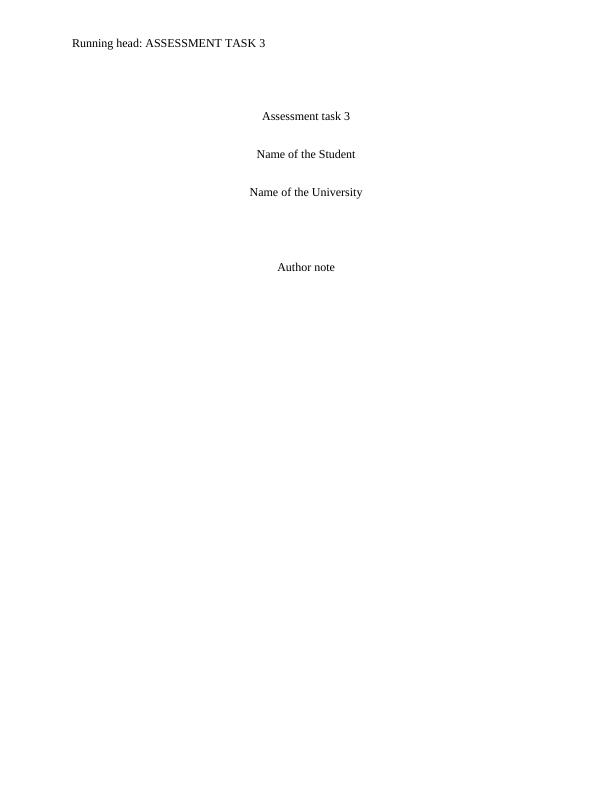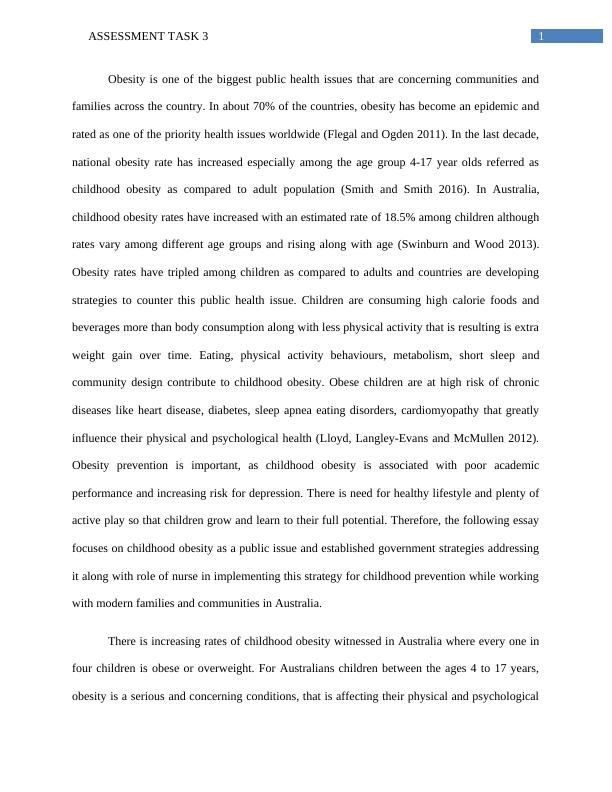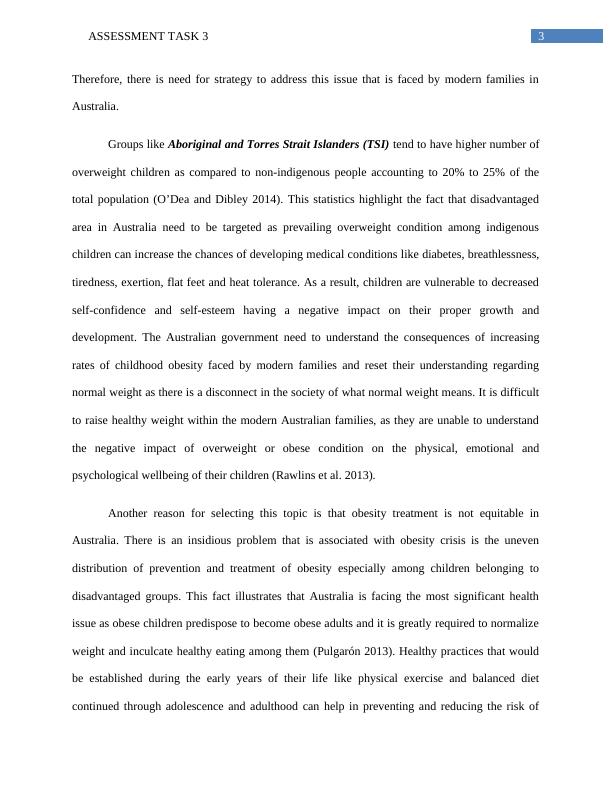Childhood Obesity as a Public Health Issue in Australia: Government Strategies and Role of Nurses
Analyse the concept of well women, well men and well children using an activities of living framework. Analyse the normal bio/psycho/social/cultural/politico/economic /environmental processes relevant to the five stages of life (Holland et al 2008).
13 Pages3625 Words345 Views
Added on 2023-06-11
About This Document
This essay discusses childhood obesity as a public health issue in Australia, its causes, consequences, and the government's national strategy for prevention. It also highlights the role of nurses in implementing this strategy while working with modern families and communities. The essay emphasizes the need for healthy lifestyle and plenty of active play so that children grow and learn to their full potential.
Childhood Obesity as a Public Health Issue in Australia: Government Strategies and Role of Nurses
Analyse the concept of well women, well men and well children using an activities of living framework. Analyse the normal bio/psycho/social/cultural/politico/economic /environmental processes relevant to the five stages of life (Holland et al 2008).
Added on 2023-06-11
ShareRelated Documents
End of preview
Want to access all the pages? Upload your documents or become a member.
Childhood Obesity: Causes, Consequences and Prevention Strategies
|6
|1570
|206
Obesity and Overweight Pandemic in Australia
|6
|1587
|456
A Report on Childhood Obesity
|9
|1533
|25
Childhood Obesity Essay Assignment
|11
|3407
|9
Childhood Obesity: Causes, Impacts, and Prevention
|7
|1434
|20
Childhood Obesity Facts & Statistics
|4
|2365
|478




